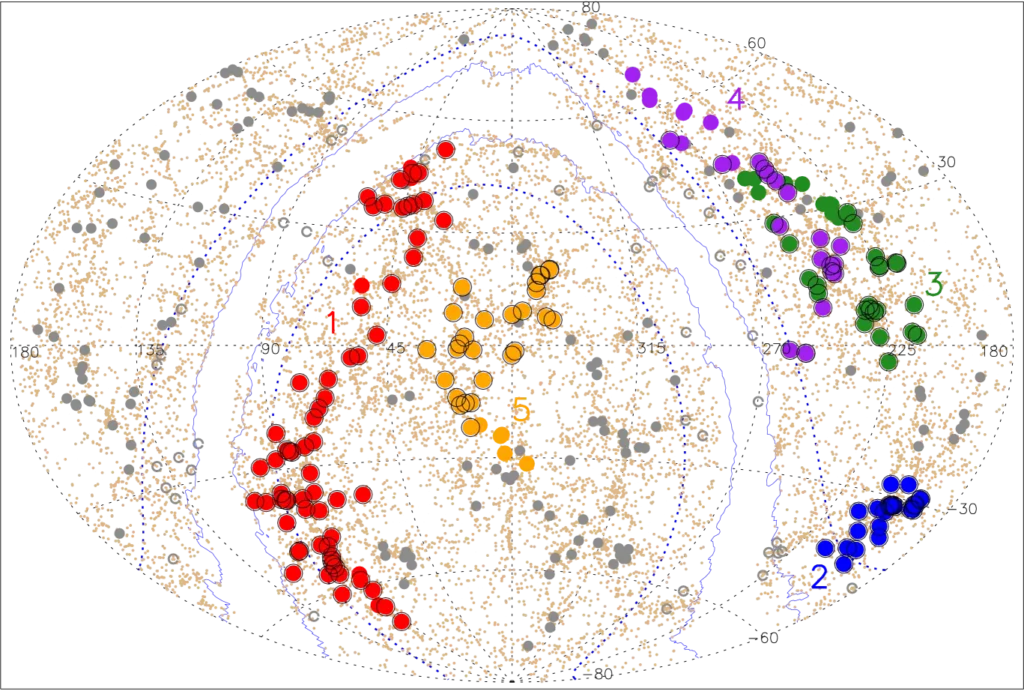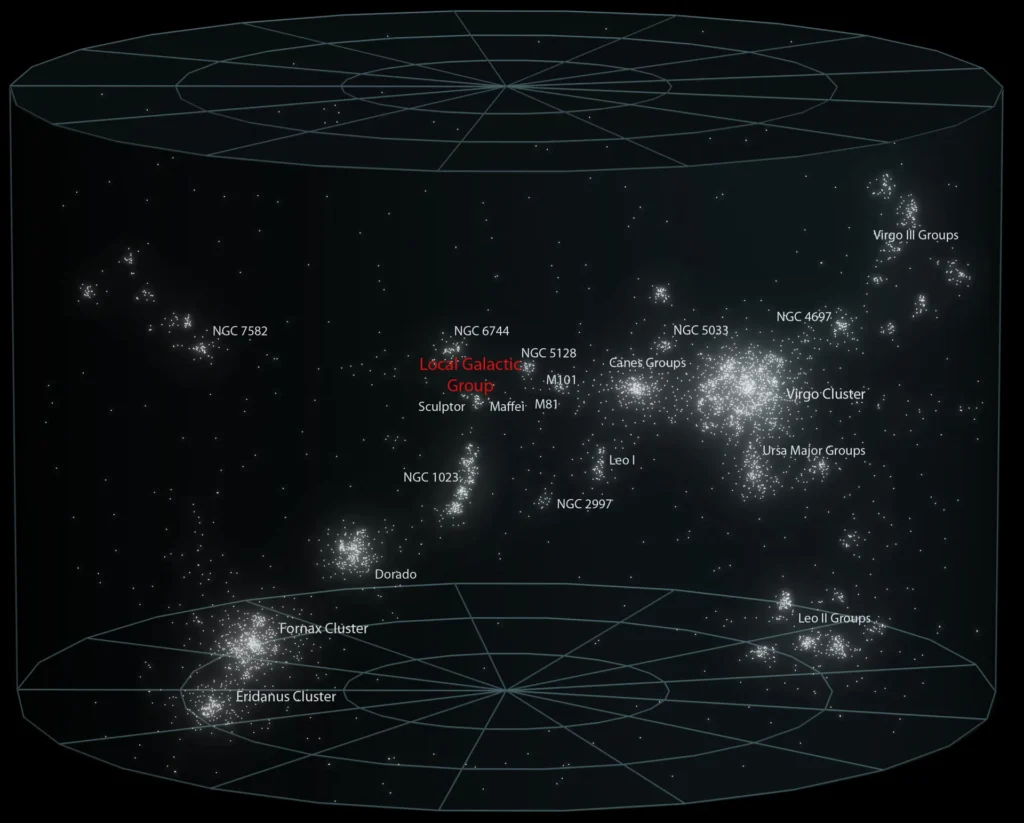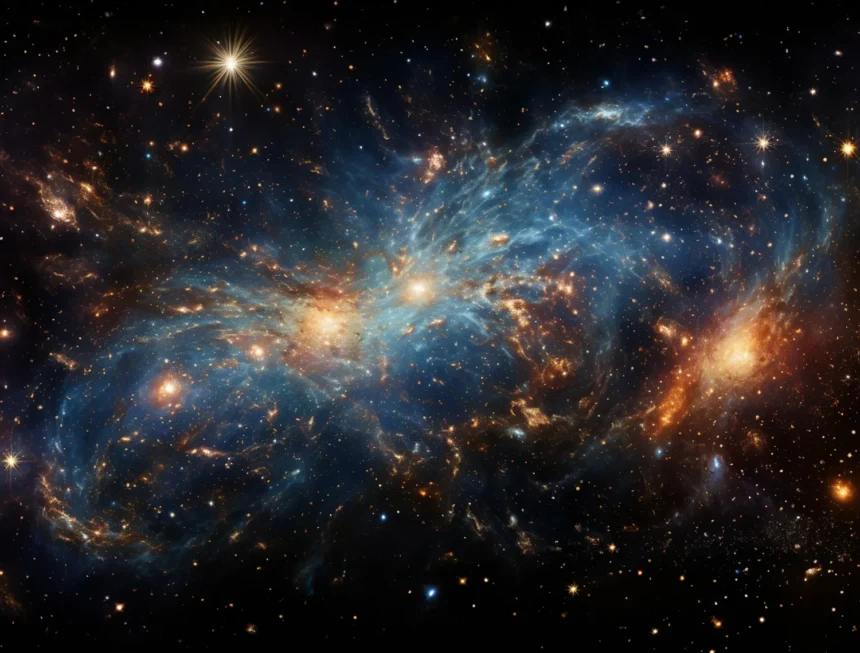Introduction
In February 2024, scientists unveiled a galactic revelation that stretches the limits of our cosmic understanding: the discovery of the Quipu Superstructure — a galaxy cluster extending 1.4 billion light-years across. This massive structure is not just another entry in the cosmic atlas; it is now considered one of the largest structures of the universe ever observed. But what makes it even more fascinating is the metaphorical and symbolic association with the Inca Quipu, an ancient data encoding system made of knotted strings. This similarity is more than poetic. The interlacing threads of galaxies in this cosmic cluster bear a striking resemblance to how ancient civilizations represented knowledge and structure.
In this article, we explore how the Quipu Superstructure mirrors universal patterns, dive deep into its astronomical context, and consider the possibility that ancient knowledge systems like the Inca Quipu may have intuitive connections to the superstructure of the universe. With recent findings and ongoing investigations from leading astrophysics institutions in the U.S. and Europe, we’re connecting the dots—both metaphorically and literally—across billions of light-years and thousands of years of human history.
Read More: How many solar systems are in the milky way galaxy
What Is the Quipu Superstructure?
Definition and Discovery
The Quipu Superstructure is a cosmic megastructure composed of interconnected galaxy clusters, discovered using radio and optical telescopes by an international team of astrophysicists. First reported by the European Southern Observatory (ESO) and NASA-affiliated researchers in early 2024, the structure spans approximately 1.4 billion light-years — a scale that challenges our current models of cosmic evolution.
“The size and shape of the Quipu Superstructure suggest a filament-like organization, similar to what we observe in the cosmic web,” said Dr. Rachel Nguyen, astrophysicist at MIT.
Why the Name ‘Quipu’?
The resemblance between this galactic structure and the Inca Quipu is not merely imaginative. When plotted in three-dimensional models, the galaxy clusters appear like knotted points along interconnecting filaments — akin to the knotted cords used by the Incas to record data. This symbolic likeness inspired the research team to name it the Quipu Superstructure, opening a new dimension in how we visualize the universe’s architectural framework.
Read More: When will the Andromeda and Milky Way Galaxy Collide
The Inca Quipu: An Ancient Data System
Historical Background
The Inca Quipu was a sophisticated system of recording and communicating information using knotted threads. It predates written language in South America and functioned as a ledger, census tool, and possibly a storytelling device. The arrangement of knots, the color of threads, and their placement all carried data — possibly including numeric, relational, and symbolic meanings.
Connection to Modern Data Models
Surprisingly, many modern researchers find parallels between the Inca Quipu and today’s data encoding models. Some even describe it as an early form of binary coding. This reinforces the plausibility that ancient civilizations had an intuitive grasp of data structuring far beyond what was previously assumed.
Read More: Ghost In The Cosmos: The Challenging Discovery of Nube, the Dwarf Galaxy
Structural Similarities: Cosmic Web vs. Quipu
Galaxy Clusters as Knots

In large-scale universe mappings, galaxies and galaxy clusters often form nodes or knots connected by filament-like dark matter. When seen from a cosmic perspective, the Quipu Superstructure mirrors this pattern — a network of interlinked points, much like a woven Quipu.
Comparative Table
| Feature | Inca Quipu | Quipu Superstructure |
|---|---|---|
| Medium | Cotton/Wool Cords | Galaxies and Dark Matter |
| Structure | Knots and Cords | Nodes and Filaments |
| Function | Data Storage/Encoding | Mass Distribution & Structure |
| Interpretation | Anthropological & Numeric | Astrophysical & Symbolic |
Related: Different Types of Galaxies in the Universe
Why Superstructure?
The Quipu Superstructure stands as a monumental discovery in our understanding of the cosmos, earning its designation as a “superstructure” due to its immense scale and complexity. Spanning approximately 1.4 billion light-years, Quipu comprises 68 interconnected galaxy clusters, collectively estimated to have a mass of about 2.4 × 10¹⁷ solar masses.
The term “superstructure” in cosmology refers to vast formations that encompass multiple galaxy clusters, forming some of the largest known entities in the universe. Quipu’s extensive reach and mass place it among the most significant of these structures, surpassing previously identified formations like the Sloan Great Wall, which measures around 1.1 billion light-years in length.

Related: Recently Identified Nebula by NASA – 10 Amazing Discoveries
The discovery of the Quipu Superstructure provides critical insights into the large-scale distribution of matter in the universe. Its study enhances our understanding of cosmic evolution and aids in refining cosmological models, particularly in measuring parameters like the Hubble constant and interpreting the cosmic microwave background.
In summary, Quipu’s vast expanse, substantial mass, and complex composition of numerous galaxy clusters firmly establish it as a superstructure, offering profound implications for the field of cosmology.
Read also: Andromeda Galaxy: definition, Facts, distance, location
Is This the Largest Structure of the Universe?
Although other massive structures such as the Hercules-Corona Borealis Great Wall and the Sloan Great Wall exist, the Quipu Superstructure stands out because of its dense complexity and symbolic resonance. It is certainly one of the most significant discoveries post-2020 and continues to challenge the cosmological principle, which posits that the universe should look the same in all directions when viewed on a large enough scale.
Key Takeaway
The Quipu Superstructure doesn’t just rival the scale of previous cosmic discoveries — it redefines our understanding of what a universal structure can represent.

Read also: Mysterious Phenomenon at the Heart of the Milky Way Hints at a New Dark Matter Suspect
The Superstructure of the Universe: Theoretical Implications
Cosmological Context
Our universe is believed to be structured like a vast, interconnected web made up of dark matter filaments, galaxies, and voids. The superstructure of the universe is not random but follows a coherent pattern that scientists are just beginning to understand.
Scientific Insights
According to a study published in Nature Astronomy in March 2025, superstructures like Quipu challenge inflationary models of the universe and require adjustments in our current understanding of gravity and matter distribution.
Read also: Black Hole’s Twisted Twin: Are White Holes a Threat to Our Universe?
Ancient Threads: Metaphysical & Cultural Symbolism
The Notion of Universal Encoding
Ancient cultures often spoke of the universe as a woven tapestry — from the Vedic concept of the “cosmic loom” to the Incan threads. These aren’t just metaphors; they might be the earliest attempts to model how the universe is bound together.
Cultural Reflections
Multiple civilizations used knots and threads for spiritual and data purposes:
- Chinese Knotting: Symbols of continuity and memory
- Celtic Cords: Representations of interconnectedness
- Andean Quipu: Practical and potentially symbolic of the cosmos
Read also: 10 Rare Celestial Omens That Sparked Awe and Fear Across Cultures
Visualizing the Quipu Superstructure
To help understand the sheer scale and intricacy of the Quipu Superstructure, visualization tools have become essential. These include:

- NASA’s OpenSpace software: Offers real-time 3D visualization of galaxy formations, allowing users to explore how the 68 galaxy clusters of the Quipu Superstructure align along filamentary lines. It helps simulate the spatial scale of the structure in interactive environments.
- ESA’s 3D Universe Simulator: Provides detailed mapping of dark matter and baryonic matter across the universe. It illustrates how the superstructure of the universe is constructed, reinforcing the knotted-node arrangement seen in Quipu.
- Comparative modeling: By overlaying data of ancient Inca Quipu structures with galactic maps, researchers have noted visual parallels, suggesting both a scientific and symbolic interconnectedness.
These tools enable us to perceive how the largest structure of the universe aligns with metaphysical representations of order, connectivity, and cosmic balance. They also assist in refining cosmological models and offer intuitive access to highly complex data.
Conclusion
The discovery of the Quipu Superstructure marks a compelling intersection of ancient wisdom and cutting-edge science. It reminds us that our universe is not just vast — it’s deeply patterned. The resemblance to the Inca Quipu urges us to look back at human history not as a primitive past, but as a reservoir of intuitive understanding. As we continue to peer into the cosmos with better tools and more refined theories, the lines between science, symbolism, and culture become more interconnected.
We are part of a universe that seems to think in patterns, organize in threads, and perhaps even remember, much like a Quipu.
FAQs
1. What is the Quipu Superstructure?
It’s a newly discovered galaxy cluster extending 1.4 billion light-years, resembling an ancient Inca Quipu.
2. Is Quipu the largest structure in the universe?
It’s among the largest, challenging previous superstructure discoveries like the Hercules-Corona Borealis Wall.
3. How does the Inca Quipu relate to this discovery?
Both feature nodal, knotted structures that suggest interconnected encoding systems.
4. What scientific tools were used in the discovery?
Radio telescopes, 3D mapping simulations, and gravitational lensing techniques.
5. Are there cultural implications to the discovery?
Yes. The visual similarity opens up questions about ancient intuition and symbolic interpretations of the universe.

